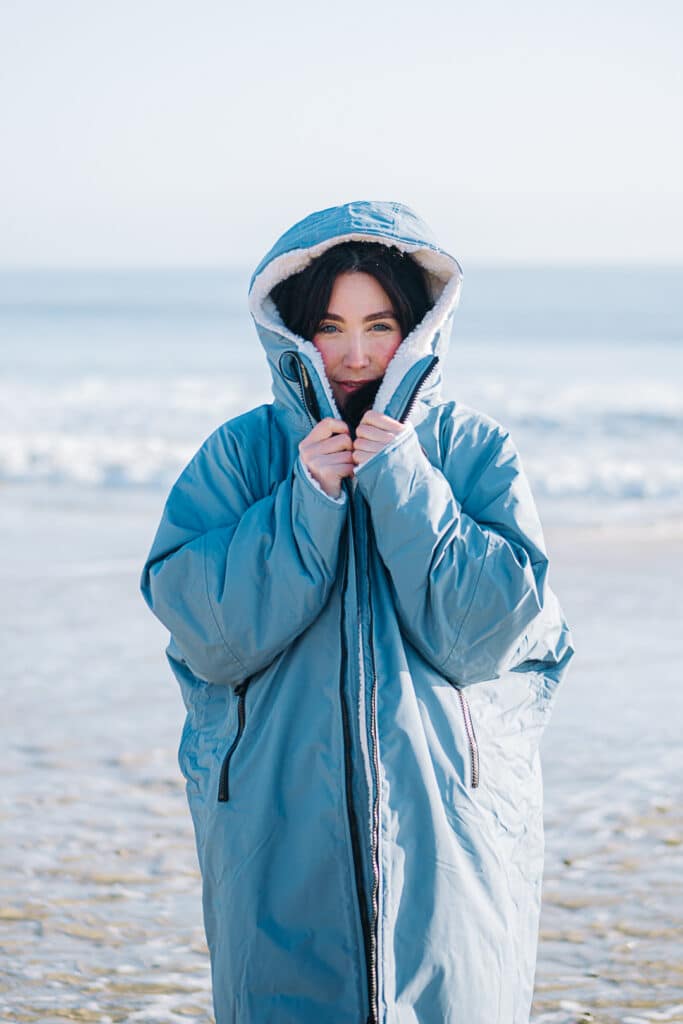Outdoor Instructor Training is brilliant. The equipment provided within the kit package is great.
Outdoor Instructor Training takes place between October and March. It can get cold; it even rains every now and again.
Staying warm, dry and comfortable is really important, it helps you learn faster and you’re way more likely to enjoy yourself.
Most of the essentials are included in the equipment package which is available to all candidates…
What’s not included in our training?
There are a few things that can make a big difference to staying warm and comfortable that aren’t included.
We don’t include them in the equipment package as they are too ‘personal’ in terms of choice and fit, it’s important that these things work really well for you!
Woolly Socks
Having cold feet is rubbish! A mid winter day in the woods or on the hill can get chilly; especially if you’re not moving about very much.
Good woolly socks can make a huge difference to how comfortable you are; they should have a good wool content, not be to tight and be as thick as your foot wear will comfortably allow.
Try these guys for good value socks.
Top Tip – wearing thick socks under boots or shoes that are a bit tight can make your feet colder. It’s way better to have some room in your footwear to allow your woolly socks to do what they’re designed to do (keep your feet toasty).

Welly Boots
If you’re not travelling very far, if you’re going to be stood around quite a lot then wellies are brilliant at keeping your feet dry and warm. Combined with a great pair of socks (or two) they are the ideal footwear, especially for a day in the woods.
Welly Boot are really cheap, you don’t have top spend loads of cash to stay comfortable: There’s loads on amazon…

Base Layers
You can buy great, inexpensive, base layers from Lidl, Aldi, Decathlon and loads of other places. No one is going to see what brand you have on so choose layers that are good value, comfortable and warm that wont get to smelly. Polyester and Nylon base layers will get stinky quite quickly, bamboo and wool base layers are more expensive but smell less.
Top Tip: Base layers are really light and take up very little space, they’re perfect for chucking in a bag as an extra layer for if you start to feel cold.

Hat’s, Scarves, Gloves
You’ll get some great gloves and a hat in the equipment package but it’s always worth having some spares. Sometimes you’ll want really thick and chunky cold weather protection, sometimes you’ll want thinner more breathable kit that lets you move fast without making you sweat. You don’t have to spend lots of money to make sure you’ve always got the ability to wrap up that bit warmer.
Top Tip: Fleece hats, gloves and scarves are cheap and work really well when it’s wet.

Rucksack
A good, hard wearing, rucksack that’s big enough for a days equipment, extra layers, food and drink is really important. A pack that has a volume of 20 – 30 litres is great for a days worth of stuff. It’s better to buy some ‘dry bags’ to go inside your pack than trying to find a waterproof rucksack. Even the most water tight of packs wont stay that way for ever.

We think that buying something as simple as possible is the best way to go. Ruck sacks that have lots of straps, buckles and pouches have more things to break and more things to snag.
Top Tip: A pack made from heavy duty fabric might be a bit heavier but it will last you A LOT longer.
You don’t have to spend loads of money on equipment to stay warm, dry and comfortable. Looking after your equipment, washing it, drying it and fixing it is good for your wallet, good for the environment and good for the soul.
Outdoor Instructor Training starts in 7 weeks – we can’t wait!





